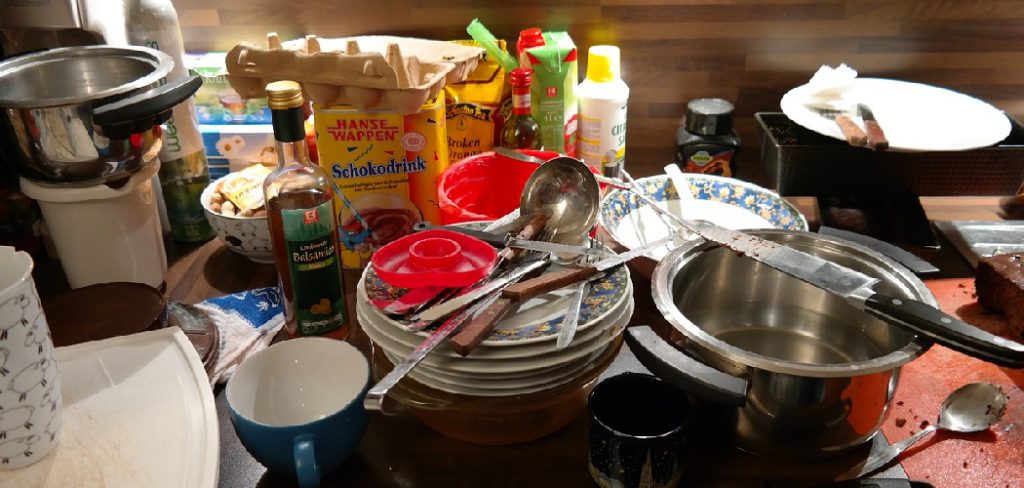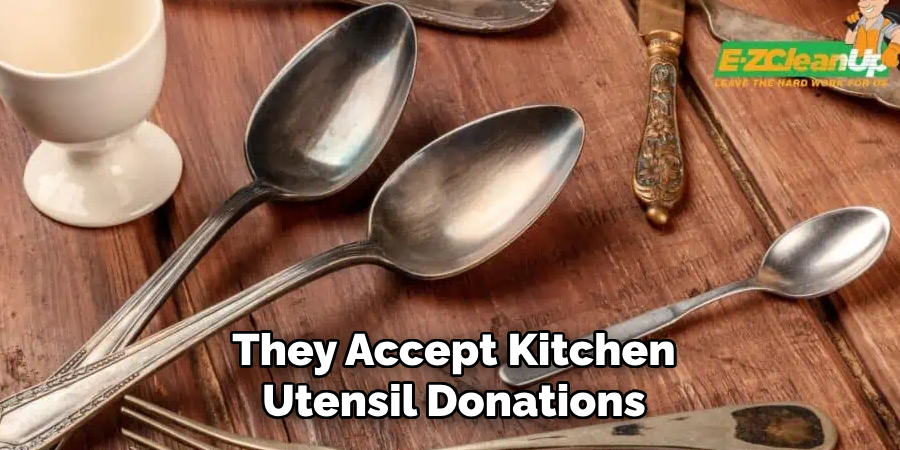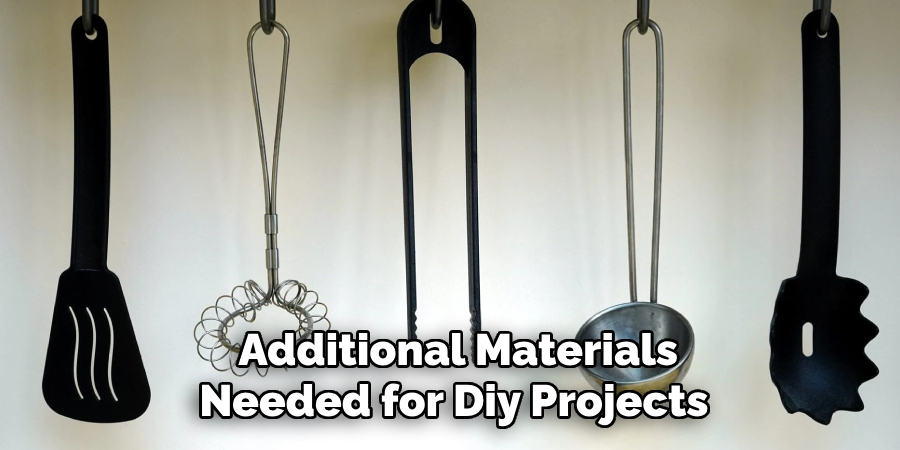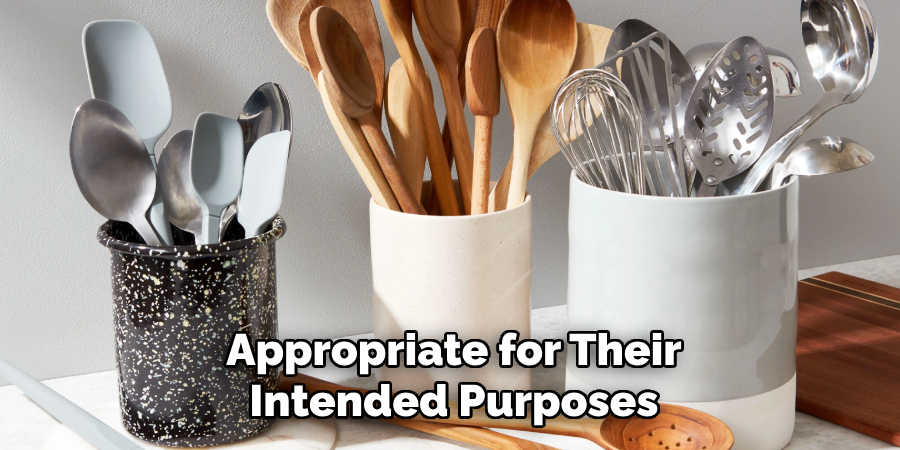Disposing of old kitchen utensils may not always be as straightforward as it seems. Many of us accumulate various types of utensils over the years, from mismatched forks and spoons to worn-out spatulas and broken whisks. When it’s time to declutter, the challenge lies in determining the most environmentally friendly and responsible ways to discard them.

This guide on how to dispose of old kitchen utensils aims to provide practical solutions for disposing of your kitchen tools sustainably, whether through recycling, donating, or finding creative reuse options, enabling you to reduce waste and minimize environmental impact.
Why Should You Dispose of Old Kitchen Utensils Responsibly?
Before delving into the various ways to dispose of old kitchen utensils, it’s essential to understand the importance of responsible disposal. Throwing away old tools in regular trash bins may seem like the most convenient option, but it can have harmful effects on the environment. Here are a few reasons why you should dispose of your utensils responsibly:
Reduce Landfill Waste:
The more items we throw away, the faster landfills fill up. Old kitchen utensils take up space and can potentially release harmful chemicals into the environment as they decompose. By disposing of them responsibly, we can help reduce landfill waste.
Minimize Pollution:
Improperly disposed kitchen utensils can end up in waterways or burned in incinerators, releasing pollutants into the air and water that can harm both humans and wildlife.
Conserve Resources:
Many utensils are made from materials that require a significant amount of energy and resources to produce, such as metal or plastic. By properly discarding old utensils, we can help conserve these valuable resources for future use.
8 Step-by-step Guidelines on How to Dispose of Old Kitchen Utensils
Step 1: Take Stock of Your Utensils
The first step towards responsibly disposing of old kitchen utensils is to take stock of what you have. Begin by gathering all your utensils from drawers, cupboards, and any other storage spaces. Assess each item individually, checking for damage, wear, or lack of use. Make a list categorizing them into those you plan to keep, recycle, donate, or repurpose.

This inventory will help you better understand the scope of your collection and identify the utensils that are ready to be discarded. Taking stock is essential for ensuring you make informed decisions about their fate, paving the way for a clutter-free and more organized kitchen space.
Step 2: Clean and Sanitize
Once you have identified the utensils you want to discard, it’s important to clean and sanitize them before proceeding with disposal. Cleaning ensures that the items are hygienic and safe, especially if you plan to donate or recycle them. Begin by washing all the utensils thoroughly with warm, soapy water to remove any food residue or grease.
For utensils made of metal, glass, or plastic, you can use a mixture of vinegar and water for an extra level of sanitation. After cleaning, dry them completely with a towel or let them air dry. This step not only maintains cleanliness but also prepares the utensils for the next path in their lifecycle, whether it’s recycling, donating, or repurposing.
Step 3: Recycle
Many kitchen utensils, such as metal and plastic items, are recyclable. Check with your local recycling facilities to see what types of utensils they accept and how they should be prepared for recycling. For example, some may require you to remove any non-recyclable parts, like rubber handles or wooden components.
If your area does not have a specific recycling program for utensils, consider finding alternative recycling options through specialized companies or online platforms.
Step 4: Donate
As the saying goes, “one man’s trash is another man’s treasure.” Donating old but usable kitchen utensils can be an excellent way of reducing waste while helping those in need. Check with local charities, thrift stores, or community organizations to see if they accept kitchen utensil donations.

You can also consider donating to schools, soup kitchens, or other community centers that may benefit from your old utensils. Just make sure the items you plan to donate are still in good condition and usable for their intended purposes.
Step 5: Repurpose
Another way to dispose of old kitchen utensils responsibly is by finding creative ways to repurpose them. For example, an unused spatula could be repurposed as a gardening tool, while an old whisk could become a unique piece of wall decor. Use your imagination and resourcefulness to give new life to your old utensils.
You can also search for DIY projects online that provide step-by-step instructions on how to transform old kitchen utensils into functional or decorative items. Not only does this reduce waste, but it also adds a personal touch to your home decor.
Step 6: Sell
If you’re looking to make a little extra money while decluttering, consider selling your old kitchen utensils. Items that are in good condition, especially those made of high-quality materials or from well-known brands, can still have value in the second-hand market. Start by evaluating which utensils could potentially be sold. You can list these items on online marketplaces like eBay, Facebook Marketplace, or Craigslist, where there’s a broad audience for used goods.
Photograph the utensils clearly, highlighting their condition and any unique features, and write detailed descriptions to attract potential buyers. Selling your utensils not only provides you with some financial return but also ensures they are reused, consequently minimizing waste.
Step 7: Compost
For kitchen utensils made from organic materials, such as wooden cutting boards or bamboo utensils, composting is an excellent way to dispose of them responsibly. Instead of throwing these items in the trash, add them to your compost bin or heap where they will decompose and create nutrient-rich soil for gardening.
Before adding any utensils to your compost, make sure to remove any non-compostable parts, like rubber handles or metal components. Over time, these items will break down and contribute to a healthier environment.
Step 8: Proper Disposal
If you have exhausted all other options and still have old kitchen utensils that cannot be recycled, donated, repurposed, sold, or composted, the final step is proper disposal. Make sure to research your local guidelines for disposing of household items before throwing them in the trash. Some areas may have specific regulations on discarding certain materials, and not following them could result in fines.
In general, make sure any sharp edges are covered or secured to prevent injuries and seal any containers with potential food residue to avoid attracting pests.
By following these step-by-step guidelines on how to dispose of old kitchen utensils, you can dispose of old kitchen utensils responsibly while minimizing waste and contributing to a cleaner and more sustainable environment for future generations. Remember that every small action counts towards making a significant impact, so don’t underestimate the power of decluttering your kitchen.
How Much Could It Cost?
The cost associated with responsibly disposing of old kitchen utensils can vary depending on the methods chosen. Recycling options are usually free or low-cost if your local facility accepts kitchen items. Donation is typically free, and some organizations may even offer pick-up services. However, specialized recycling services that cater to specific materials might charge a fee for their services.
Selling your old kitchen utensils can offset disposal costs and potentially provide a profit if the items are in good condition. Online marketplaces often have nominal listing fees or take a small percentage of the final sale price. If you opt for repurposing, costs are generally related to additional materials needed for DIY projects, which can vary widely based on complexity and creativity.

By considering each of these factors, you can estimate the potential costs and benefits of each disposal method, ultimately making an informed decision that aligns with your financial and environmental priorities.
Frequently Asked Questions
Q1: Can I Recycle Metal Kitchen Utensils?
A1: Yes, many metal kitchen utensils are recyclable. Check with your local recycling facilities for specific guidelines on how to prepare and dispose of them properly.
Q2: How Can I Repurpose Old Kitchen Utensils?
A2: There are several ways to repurpose old kitchen utensils, such as using them as gardening tools, wall decor, or even turning them into unique DIY projects. Search online for inspiration and tutorials on how to give new life to your old utensils.
Q3: Are Wooden Kitchen Utensils Compostable?
A3: Yes, wooden kitchen utensils are compostable. Make sure to remove any non-compostable parts before adding them to your compost bin or heap. However, if they have been treated with chemicals or finishes that may not break down naturally in a composting environment, it’s best to dispose of them following your local guidelines.
Q4: Can I Donate Old Kitchen Utensils?
A4: Yes, you can donate old kitchen utensils in good condition to local charities, thrift stores, community organizations, or schools. Just make sure they are still usable and appropriate for their intended purposes.

Conclusion
Taking the time to dispose of old kitchen utensils responsibly is not just a routine task but a meaningful opportunity to contribute to environmental sustainability. Whether you choose to recycle, donate, repurpose, sell, compost, or properly dispose of these items, each action can have a positive impact on reducing waste and preserving natural resources.
By following the outlined steps on how to dispose of old kitchen utensils, you actively participate in creating a cleaner world for future generations while promoting a cycle of reuse and sustainability. Remember, conscious decisions in our everyday lives can collectively lead to a significant environmental difference.
Professional Focus
Angela Ervin, a former interior designer turned blogger, specializes in kitchen design and renovations. Through her website, she blends her passion for cooking with design expertise, sharing practical and creative ideas. Known for balancing functionality and beauty, Angela’s insightful content has made her a trusted voice in home design and lifestyle.
About the Author
Angela Ervin, an experienced interior designer and blogger, combines her passion for kitchen renovations with storytelling. Living in Petersburg with her family, she enjoys cooking and testing her projects firsthand. Known for her humor and relatable style, Angela shares creative, functional design insights through her content, making her a trusted voice in home design.
Education History
University: Virginia Commonwealth University
Degree: Bachelor of Fine Arts (BFA) in Interior Design
- Angela’s education at VCU focused on mastering core interior design principles, including spatial planning, color theory, materials selection, and sustainable design practices.
- She gained hands-on experience through studio projects and collaborative design exercises, which honed her ability to create functional and aesthetically pleasing environments.
- Her coursework also emphasized problem-solving and practical applications of design, preparing her for real-world projects like her self-directed kitchen renovations.
- The program’s strong foundation in both technical skills and creative expression shaped Angela’s ability to seamlessly integrate form and function in her work.


